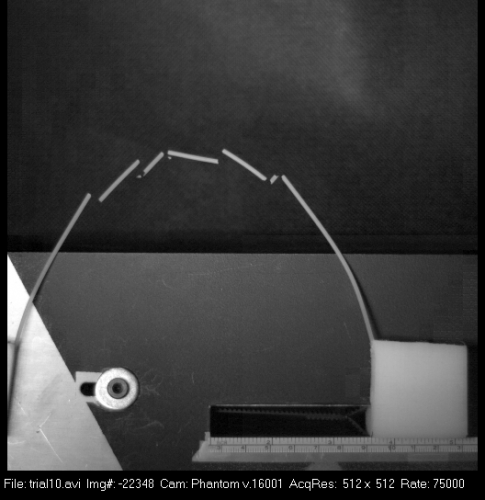Try breaking spaghetti into two pieces. It’s not as easy as it sounds. If you take two ends of a strand of spaghetti and bring them together, the noodle will almost always break into three or more pieces. This counterintuitive phenomenon has perplexed scientists for decades, stumping even American theoretical physicist and Nobel laureate Richard Feynman, who sought to explain why.
It wasn’t until 2005 that French scientists Basile Audoly and Sebastien Neukirch cracked the code and discovered the underlying forces that occur when spaghetti—or any long, thin rod—is bent. Typically, the noodle will break at the point of highest curvature, after which it wants to straighten itself out. This subsequently creates a so-called snap-back effect, which sends a vibrating wave down the noodle and causes multiple fractures—a fracture cascade. In 2006, Audoly and Neukirch were awarded the Ig Nobel Prize—a parody of the original Nobel that celebrates unusual achievements in science—for their ingenuity in solving this age-old puzzle. But their findings still begged the question: can spaghetti ever break into two pieces?
Fast forward to 2018. Following months of breaking spaghetti with a specially designed noodle-breaking apparatus, a team of MIT researchers said, yes—but with a twist. In a paper published in Proceedings of the National Academy of Sciences, MIT researchers found that spaghetti can be broken into halves by either twisting the noodle or compressing it very slowly. Via the first method, the spaghetti strand must be twisted by nearly 300 degrees in order to break into two.
“In order to get anything to break, you must apply supercritical stress. This can be achieved through bending or twisting,” said Jörn Dunkel, co-author of the project and Associate Professor of Physical Applied Mathematics at MIT. When a noodle is bent or twisted past its neutral straight position, it wants to correct itself accordingly. The correction creates waves that result in additional fractures. Dunkel’s students Ronald Heisser and Vishal Patil discovered that simultaneously applying bending and twisting stresses to a noodle coerces it to break into two pieces.
When the noodle snaps, “The bending and twisting waves are propagated at different speeds, so you never get supercritical stress at some other location in the rod,” Dunkel said. The two processes essentially distribute and dissipate the energy needed to fracture spaghetti a third time. Hence, supercritical stress is never attained, and a fracture never occurs.
The researchers also found a second way to break the spaghetti into two through a process called quenching, or compressing the noodle. If done at a very slow velocity, the noodle breaks into two. On the other hand, if compressed quickly, the noodle shatters into multiple fragments. Dunkel likens the process of quenching to that of a vibrating string on an instrument. When a low pitch is played, the wavelength of the sound wave is high and the frequency is low. This situation parallels the large waves that result from slow compression of a noodle. The low frequency and high wavelength of compression divides the noodle at fewer points, which results in fewer points of supercritical stress. Higher speeds of compression induce waves with higher frequencies, which creates more areas of supercritical stress, and, thus, more fracture points.
While the practical applications of this research are currently unclear, Dunkel and his team’s research provides us with a better understanding of how elongated rods behave under stresses of bending, twisting, and quenching and paints a clearer picture of how fractures work. After all, examples of fractures are everywhere around us, like in broken bones and fracturing plate tectonics. The results of this research may even provide a glimpse into how the microtubules in our cells behave under duress, as Dunkel’s mathematical models can fit rods made of different materials, elasticities, lengths, and radii.
For now, Dunkel reminds us to appreciate the scientific and mathematical theories underlying even the most mundane of phenomena. “We like to connect with the broader public, but one should also remain aware of the broader theoretical implications that reach beyond breaking spaghetti!” The next time you snap spaghetti, just remember that there’s more than meets the eye.

